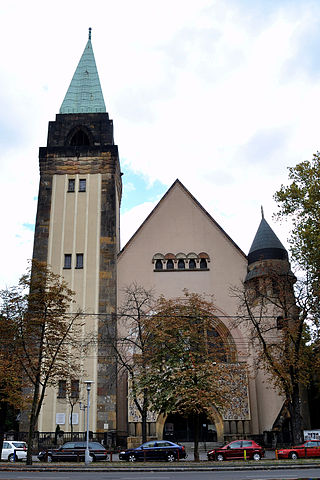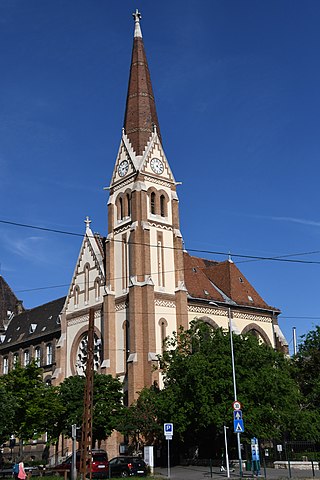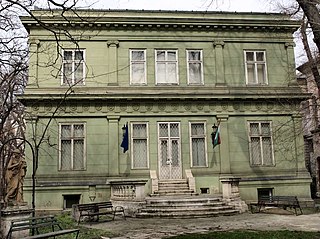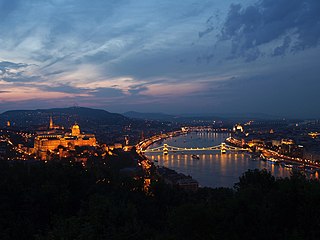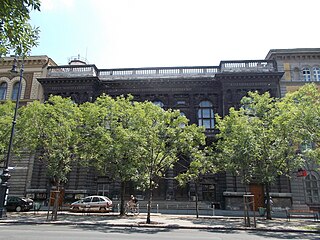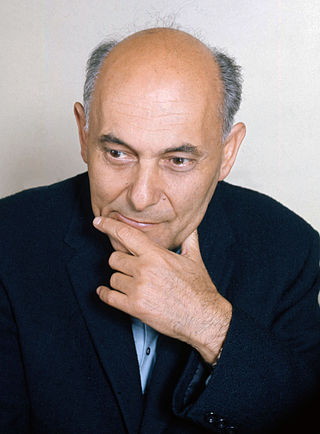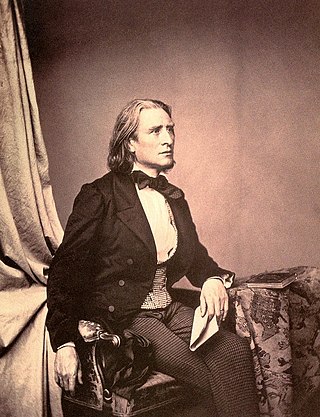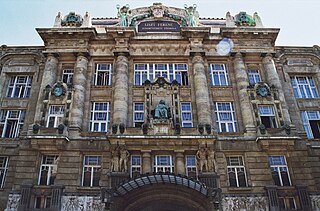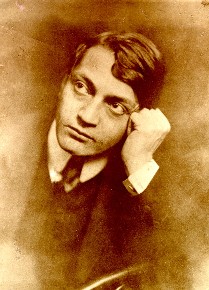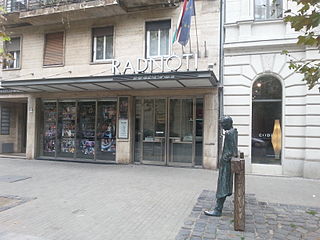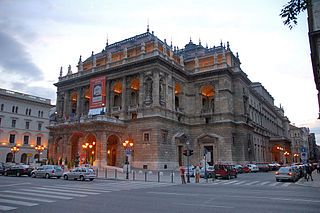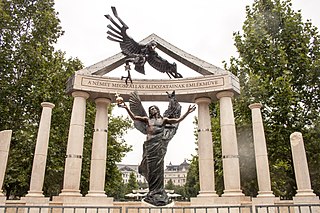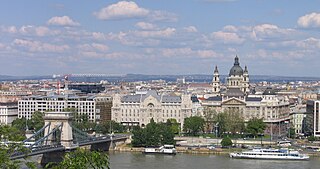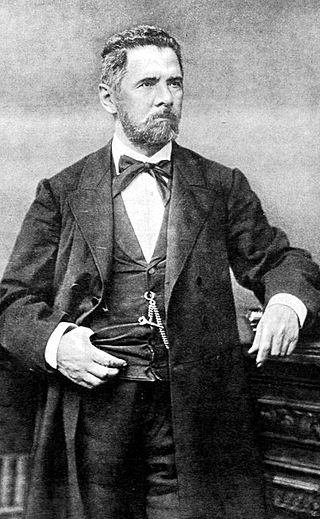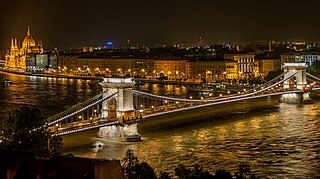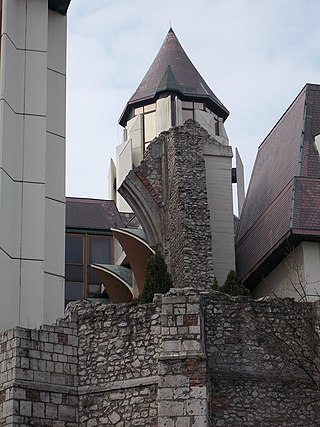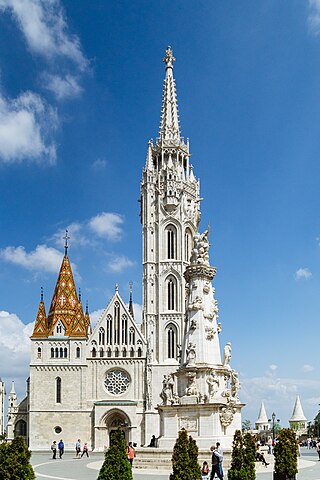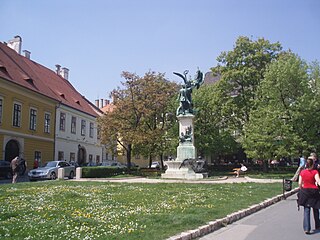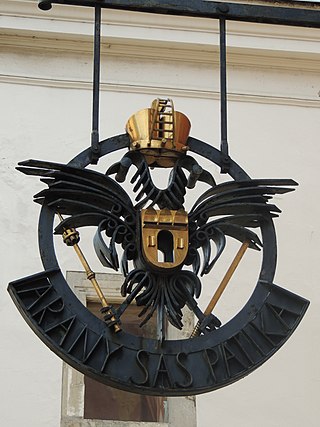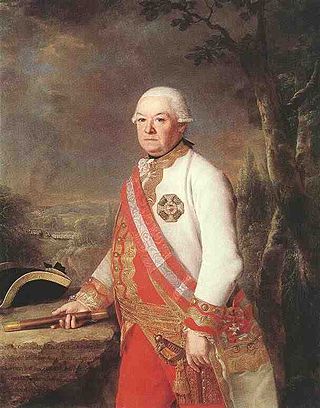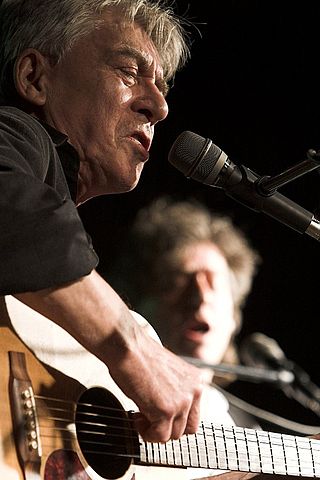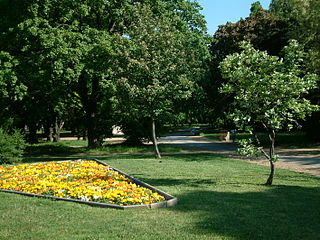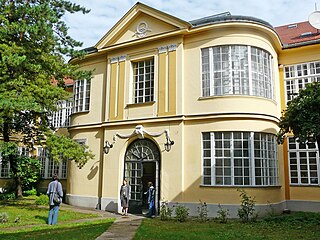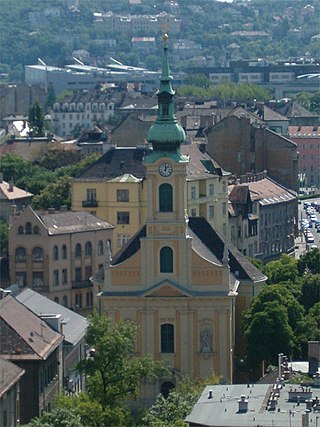Self-guided Sightseeing Tour #12 in Budapest, Hungary
Legend
Guided Free Walking Tours
Book free guided walking tours in Budapest.
Guided Sightseeing Tours
Book guided sightseeing tours and activities in Budapest.
Tour Facts
11.7 km
269 m
Experience Budapest in Hungary in a whole new way with our free self-guided sightseeing tour. This site not only offers you practical information and insider tips, but also a rich variety of activities and sights you shouldn't miss. Whether you love art and culture, want to explore historical sites or simply want to experience the vibrant atmosphere of a lively city - you'll find everything you need for your personal adventure here.
Activities in BudapestIndividual Sights in BudapestSight 1: Fasori Református templom
The Reformed Church of Fasor or Fasor Reformed Church is an Art Nouveau Protestant church in District VII of Budapest, designed by Aladár Árkay in 1910–1912. It is part of the Reformed Church in Hungary.
Sight 2: Fasori evangélikus templom
The Lutheran Church of Fasor stands in district VII of Budapest, on the corner of Városligeti fasor and Bajza street. The most ornate Protestant church of the capital, after the Lutheran church on Deák Square, is the second largest Lutheran church in Budapest. It forms one block with the building of the Lutheran High School in Fasor.
Sight 3: Ráth György Múzeum
The György Ráth Villa is a branch institution of the Museum of Applied Arts in Budapest VI. district. From 14 September 2018, the villa reopened its doors with a permanent exhibition entitled Our Art Nouveau, which presents the most significant pieces of the Art Nouveau collection of the Museum of Applied Arts and makes them available to the public during the reconstruction works of the main building of the Museum of Applied Arts, at the same time commemorating György Ráth, the first director of the museum.
Sight 4: Postamúzeum
The Post Museum is the name of the Hungarian museum presenting the history and operation of the post office, which has filiales in the capital, in large cities and in the countryside. The exhibition spaces are maintained by the Postakürt Foundation.
Sight 5: Kodály Zoltán Emlékmúzeum és Archívum
Kodály Zoltán Memorial Museum and Archives
Wikipedia: Kodály Zoltán Emlékmúzeum és Archívum (HU), Facebook, Website En
Sight 6: Andrássy Avenue and the Underground
Budapest World Heritage sites are the view of the Danube bank, the Buda Castle District and Andrássy Avenue.
Sight 7: Budapest Puppet Theatre
The Budapest Puppet Theater has been open since 1949, with its primary venue currently situated at 69 Andrássy út, Budapest. Since then, both children and adults are warmly welcome to their performances, because they have a motto that “the puppet is not the matter of age, but a genre.”
Sight 8: Solti György
Sir Georg Solti was a Hungarian-British orchestral and operatic conductor, known for his appearances with opera companies in Munich, Frankfurt, and London, and as a long-serving music director of the Chicago Symphony Orchestra. Born in Budapest, he studied there with Béla Bartók, Leó Weiner, and Ernő Dohnányi. In the 1930s, he was a répétiteur at the Hungarian State Opera and worked at the Salzburg Festival for Arturo Toscanini. His career was interrupted by the rise of the Nazis' influence on Hungarian politics, and being Jewish, he fled the increasingly harsh Hungarian anti-Jewish laws in 1938. After conducting a season of Russian ballet in London at the Royal Opera House, he found refuge in Switzerland, where he remained during the Second World War. Prohibited from conducting there, he earned a living as a pianist.
Sight 9: Liszt Ferenc
Get Ticket*Franz Liszt was a Hungarian composer, virtuoso pianist, conductor and teacher of the Romantic period. With a diverse body of work spanning more than six decades, he is considered to be one of the most prolific and influential composers of his era, and his piano works continue to be widely performed and recorded.
Sight 10: Liszt Ferenc tér
It is located in the VI. district of Liszt Ferenc Square Budapest.
Sight 11: Ady Endre
Endre Ady was a turn-of-the-century Hungarian poet and journalist. Regarded by many as the greatest Hungarian poet of the 20th century, he was noted for his steadfast belief in social progress and development and for his poetry's exploration of fundamental questions of the modern European experience: love, temporality, faith, individuality, and patriotism.
Sight 12: Jókai tér
Jókai tér is a large square in Budapest, located in the Terézváros district near Andrássy út and Nagykörút. With Liszt Ferenc tér, the square forms a vast space conquered by terraces and drinking establishments. Budapest Portal
Sight 13: Budapest Operetta and Musical Theatre
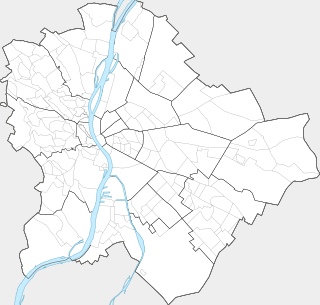
The Budapest Operetta Theatre is a musical theatre in Budapest.
Sight 14: Thália Színház
Since 1995, the theatre company of Thália Theatre has been performing in the building at 22-24 Nagymező Street, district VI of the Budapest.
Sight 15: Radnóti Miklós Színház
The Radnóti Miklós Theatre is one of the theatres of Budapest.
Sight 16: Andrássy Élményközpont
Sight 17: Hungarian State Opera House
The Hungarian State Opera House is a historic opera house located in central Budapest, on Andrássy avenue. Originally known as the Hungarian Royal Opera House, it was designed by Miklós Ybl, a major figure of 19th-century Hungarian architecture. Construction began in 1875, funded by the city of Budapest and by Emperor Franz Joseph I of Austria-Hungary, and the new house opened to the public on the 27 September 1884. Before the closure of the "Népszínház" in Budapest, it was the third largest opera building in the city; today it is the second largest opera house in Budapest and in Hungary.
Sight 18: Carl Lutz Emlékszoba
The Glass House was a building used by the Swiss diplomat Carl Lutz to help Jews in Budapest during the Holocaust.
Sight 19: Batthyány's sanctuary lamp
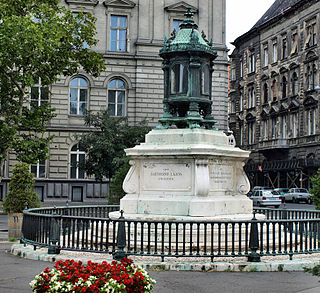
Batthyány's sanctuary lamp is a national monument, located at the corner of Báthory Street and Hold Street in Lipótváros, Budapest, Hungary. It sits on the former location of the courtyard of the New Building, where Count Lajos Batthyány (1807–1849), the first Prime Minister of Hungary, was executed on 6 October 1849.
Sight 20: Soviet soldiers memorial
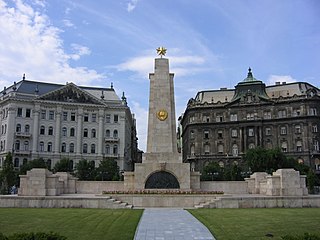
The Memorial to Soviet Heroes is a monument dedicated to the Soviets who died for the liberation of Budapest in the center of Szabadság tér, in the 5th district of the Hungarian capital. Budapest Portal Architecture and Urban Planning Portal
Wikipedia: Mémorial aux héros soviétiques (FR), Url Kozterkep
Sight 21: Kermit the Frog
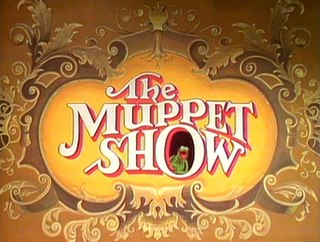
The Muppet Show is a variety sketch comedy television series created by Jim Henson and starring the Muppets. It is presented as a variety show, featuring recurring sketches and musical numbers interspersed with ongoing plot-lines with running gags taking place backstage and in other areas of the venue.
Wikipedia: The Muppet Show (EN), Url Kozterkep, Facebook, Website
Sight 22: Memorial to the Victims of the German Occupation
The Memorial for Victims of the German Occupation is a monument created in memory of the German invasion of Hungary, located in Budapest's Liberty Square. The memorial has sparked controversy and angered Jewish community organizations, with critics alleging that the monument absolves the Hungarian state and Hungarians of their collaboration with Nazi Germany and complicity in the Holocaust. Accordingly, many individuals and organizations leave improvised individual tributes to Holocaust victims along the edge of the site.
Wikipedia: Memorial for Victims of the German Occupation (EN), Url Kozterkep
Sight 23: Széchenyi István tér
Széchenyi István Square is located in the V district of Budapest, at the Pest foot of the Chain Bridge, and is part of the World Heritage Site on the banks of the Danube.
Sight 24: Salamon Ferenc
Salamon Ferenc (1825-1892) was a historian, translator, and literary critic known for his writings on Ottoman Hungary.
Sight 25: Shoes on the Danube Bank
The Shoes on the Danube Bank is a memorial erected on 16 April 2005, in Budapest, Hungary. Conceived by film director Can Togay, he created it on the east bank of the Danube River with sculptor Gyula Pauer to honour the Jews who were massacred by fascist Hungarian militia belonging to the Arrow Cross Party in Budapest during the Second World War. They were ordered to take off their shoes, and were shot at the edge of the water so that their bodies fell into the river and were carried away. The memorial represents their shoes left behind on the bank.
Sight 26: Széchenyi Chain Bridge
The Széchenyi Chain Bridge is a chain bridge that spans the River Danube between Buda and Pest, the western and eastern sides of Budapest, the capital of Hungary. Designed by English engineer William Tierney Clark and built by Scottish engineer Adam Clark, it was the first permanent bridge across the Danube in Hungary. It was opened in 1849. It is anchored on the Pest side of the river to Széchenyi Square, adjacent to the Gresham Palace and the Hungarian Academy of Sciences, and on the Buda side to Adam Clark Square, near the Zero Kilometre Stone and the lower end of the Castle Hill Funicular, leading to Buda Castle.
Sight 27: Rubik's Cube

The Rubik's Cube is a 3D combination puzzle invented in 1974 by Hungarian sculptor and professor of architecture Ernő Rubik. Originally called the Magic Cube, the puzzle was licensed by Rubik to be sold by Pentangle Puzzles in the UK in 1978, and then by Ideal Toy Corp in 1980 via businessman Tibor Laczi and Seven Towns founder Tom Kremer. The cube was released internationally in 1980 and became one of the most recognized icons in popular culture. It won the 1980 German Game of the Year special award for Best Puzzle. As of January 2024, around 500 million cubes had been sold worldwide, making it the world's bestselling puzzle game and bestselling toy. The Rubik's Cube was inducted into the US National Toy Hall of Fame in 2014.
Wikipedia: Rubik's Cube (EN), Url Kozterkep, Facebook, Website
Sight 28: Szent Miklós domonkos kolostor
The St. Nicholas Dominican monastery stood in the Buda Castle. Its remains can be found with the Nicholas Tower on András Hess Square, integrated into the Hilton hotel building as a Dominican court.
Sight 29: Matthias Church
The Church of the Assumption of the Buda Castle, more commonly known as the Matthias Church and more rarely as the Coronation Church of Buda, is a Catholic church in Holy Trinity Square, Budapest, Hungary, in front of the Fisherman's Bastion at the heart of Buda's Castle District.
Sight 30: Holy Trinity Statue

The Holy Trinity statue of Buda Castle stands in the Budapest I. district on Trinity Square, in front of the Matthias Church.
Wikipedia: Szentháromság-szobor (Budai Várnegyed) (HU), Url Kozterkep
Sight 31: Statue of Independence War
The Honvéd statue is a memorial place erected in honor of the freedom fighters who occupied Buda Castle in 1849.
Sight 32: Golden Eagle Pharmacy Museum
The Golden Eagle Pharmacy was the first pharmacy in Buda, after the expulsion of the Turks, it was founded in 1687 in today's house No. 1-2 Ornamental Square by Ferenc Ignác Bösinger. Between 1687 and 1696 the pharmacy moved to 6 Ornamental Square. Bösinger also opened a branch pharmacy in Watertown, which later became known as the Black Bear Pharmacy.
Sight 33: Monument of András Hadik von Fudak
Count András Hadik de Futak was a Hungarian nobleman and Field Marshal of the Imperial Army. He was Governor of Galicia and Lodomeria from January 1774 to June 1774, and is the father of Karl Joseph Hadik von Futak. He is famous for capturing the Prussian capital Berlin during the Seven Years' War.
Sight 34: Cseh Tamás archívum
Tamás Cseh was a Hungarian composer, singer and actor. He won the Kossuth Prize and also the Liszt Ferenc prize.
Sight 35: Hospital in the Rock
Get Ticket*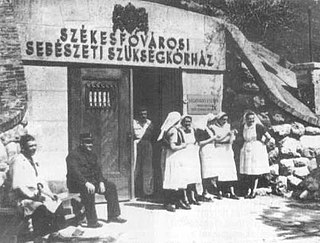
The Hospital in the Rock Nuclear Bunker Museum is the name given to a hospital created in the caverns under Buda Castle in Budapest in the 1930s, in preparation for the Second World War.
Sight 36: Szent Lázár templom romjai
Settlements existed on the territory of today's Budapest already in ancient times, the territory of which, after their disappearance, from the Árpád era onwards, was shared not only by the three cities, Óbuda, Buda and Pest, but also by villages, sometimes quite close to the city walls. Their inhabitants are serfs, royal officials and other court people. All of these settlements were either merged into larger, later villages, which later became Budapest districts in the 1950 spatial planning, or were abandoned early, during the Tatar invasion or later during the Turkish occupation.
Sight 37: Vérmező
Vérmező is a public park in Budapest I. district, Krisztinaváros. It was here that the beheading of Ignatius Martinovics and his associates took place on May 20, 1795.
Sight 38: Országos Színháztörténeti Múzeum és Intézet
The National Museum and Institute of Theatre History (OSZMI) is a state-founded cultural institution, currently maintained by the Foundation for Theatre and Film Arts. Its building is located in the first district of Budapest, at Krisztina körút 57. As a museum, it performs public collection tasks, and as a scientific institute, its important tasks include supporting the theatre profession and researchers dealing with Hungarian theatre history.
Wikipedia: Országos Színháztörténeti Múzeum és Intézet (HU), Website, Facebook
Sight 39: Krisztinavárosi Havas Boldogasszony plébániatemplom
The Parish Church of Our Lady of the Snows in Krisztinaváros is a Roman Catholic church in Budapest I. district, on Krisztina Square. It is protected as a monument. Local names are Krisztina Square Church, Krisztina Church or Lower Krisztina.
Wikipedia: Krisztinavárosi Havas Boldogasszony-plébániatemplom (HU), Url Miserend
Sight 40: Horváth-kert
The Horváth Garden Public Park is located in Budapest I. district, Krisztinaváros.
Share
Disclaimer Please be aware of your surroundings and do not enter private property. We are not liable for any damages that occur during the tours.
GPX-Download For navigation apps and GPS devices you can download the tour as a GPX file.
